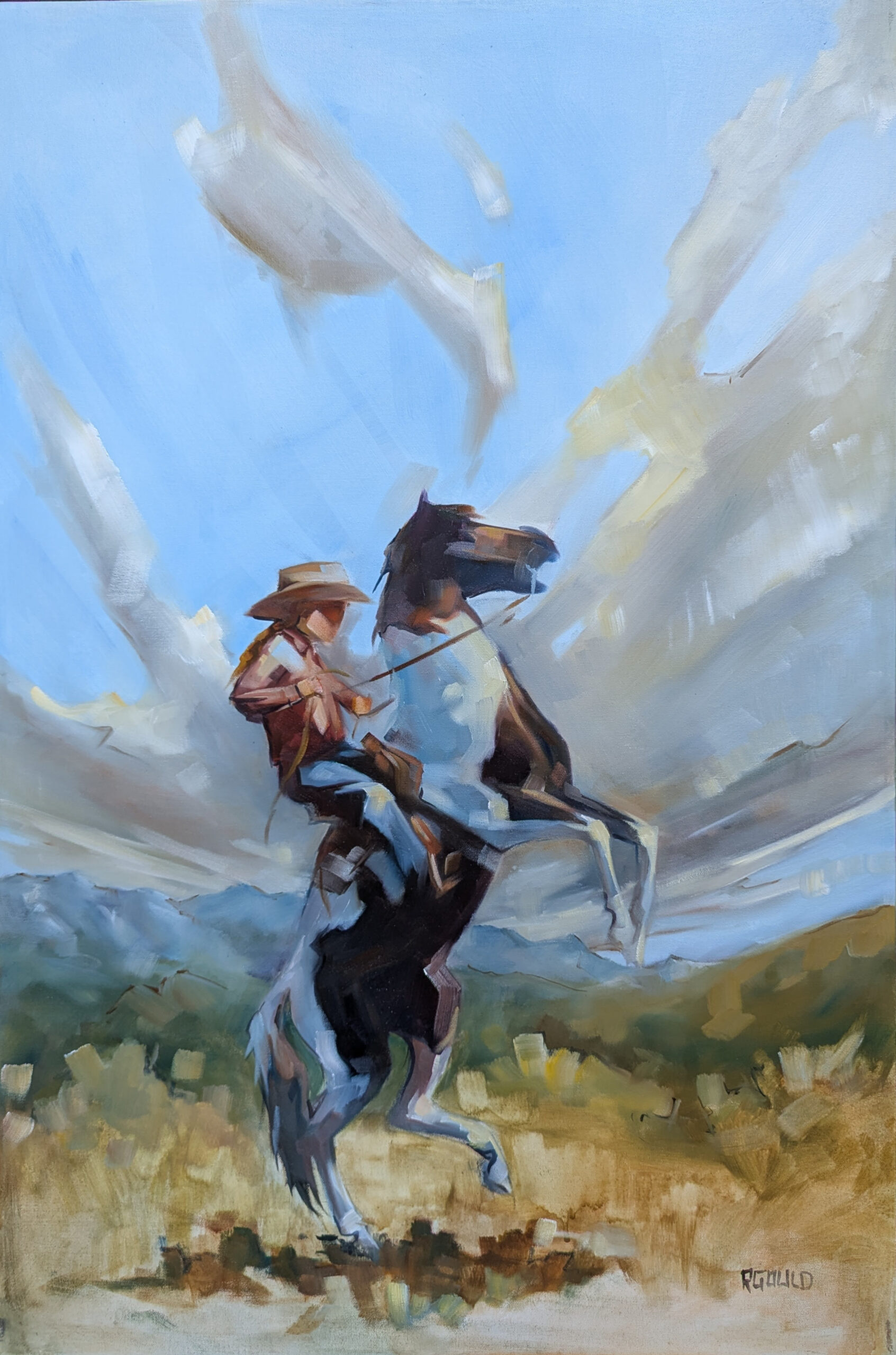Renee Gould’s art doesn’t just capture the Western lifestyle, it honors the women who live it. Raised among horses and open skies in Alberta, Renee’s journey from competitive equestrian and cattle rancher to celebrated Western artist is as layered as her paintings. What began as a creative outlet during maternity leave has evolved into a movement, one that uplifts the stories of real cowgirls whose strength, resilience, and grace often go unseen. Through her series like The Cowgirl Project, Renee invites viewers to reconnect with the land, community, and quiet power that define the West, not as a bygone era, but as a living, breathing story still being written today.
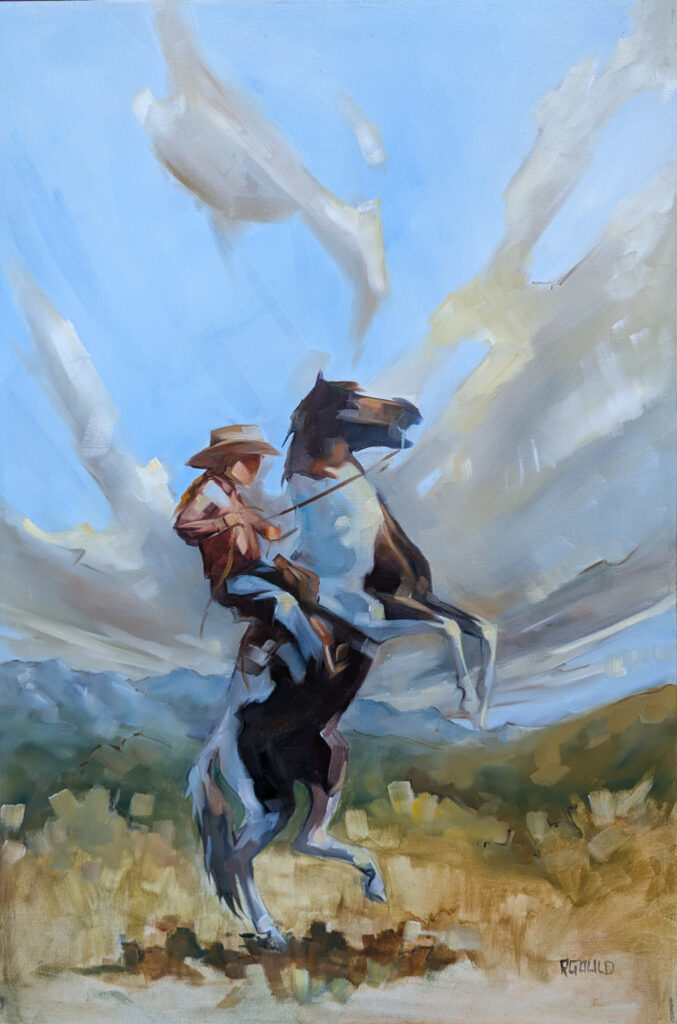
Q: Can you tell our audience a little more about yourself?
A: I grew up in the foothills of Alberta, riding horses in a multitude of disciplines but with a focus on Polocrosse and Show Jumping. I have travelled all over the world playing Polocrosse (France, Australia, South Africa, and across the US), and I lived in Texas for a year. When I was at home, I grew up being a part of the local Pony Club and eventually moved into working, training, and starting Show Jumpers. And when I went to University, I worked in the polo industry for the summers. In short, I lived and breathed horses. After University, I met my ex-husband and moved to his family farm four hours away in the Alberta prairies. There, we raised 300 head of cattle and cash crops, managing a 10000-acre land base. There, I adopted the identity of a cowgirl and connected with my own history, as my family comes from a large farming operation, but it was sold off before I was born. I became familiar with what it truly means to be cowgirl and that the term has nothing to do with what skills a person has or what they wear but rather their traits; their passion for this way of life, their resiliency when life gets hard, their grace to go through life with kindness and integrity, their community is made from lifting others up, and the courage to chase dreams.

Q: Growing up, did you always want to be an artist? Additionally, what did the beginning of your art career look like?
A: I’ve always been artsy; wearing crayons down to nubs, filling colouring books, and creating. I am also lucky to have my mom’s sister and cousin as working artists. I feel like they paved the way for me to do what I do with confidence and support. Every year for as long as I can remember, we used to go and see my mom’s cousin’s art at the Calgary Stampede. My aunt would come over in the summer and paint my mom’s garden, or she’d show us her latest painting whenever we visited; she even gave me my first painting lesson! There was always original art hung on the walls, and it was talked about with pride.
In University, I received a Bachelor of Art and a Bachelor of Education. At this time, I wasn’t considering becoming an artist, but I liked art, so I thought I’d teach it. At University, the art classes were very loosely guided and had a strong emphasis on concept and very modern creation, so horses were perceived as overdone and not well-received, so I steered clear of them, even though that’s what I loved to draw. I like to say I didn’t learn how to make art, but I learned a lot about art and art history.
It wasn’t until I was on maternity leave with my first child and living on the farm that I decided to pick up my paintbrush and just paint. I painted during nap time, late at night, and early in the morning and when they started to pile up, I put a call out to friends and my small social media following, asking for photos of their pets, and if they wanted to buy them, they were $100. I’d paint one a day and did them for 30 days. I did this multiple times for three years. My goal at that time was just to get paid to get better, to make enough money to cover the cost of canvas and paint. I had dreams of being a part of the Calgary Stampede and saw that there was an opportunity beyond.
After three years, I told myself to get out of my own way, and I applied to the Calgary Stampede with a small selection of small works. The organizers later told me they accepted me on a whim as they saw I didn’t have a lot of work that wasn’t pet portraits, but they liked what I submitted. That first show I painted big for the first time (36×72″), and I painted historical photos and scenery of our farming community. I was enamoured with the history and the stories of rural Alberta and the people who inhabit them. This show was the foundation of what I do now. I saw how much people responded to the stories, and then they had stories and photos of their own to share with me. I noticed the historical photos didn’t show the women riding the horses, working the cattle, or doing all the things I knew they must have been doing, because they are things I am doing now.
The following year, I decided to make it even more personal and asked my cowgirl friends to join me for a fun photo shoot. From there, I created a whole collection of work based on my friends and me. I wanted to start the conversation about the cowgirl and the value she brings to the farm. These were women who could ride a horse, gather cattle, pull a calf, and feed a crew at the end of the day, all with kids in tow. More than anything, they had the traits: passion, resilience, courage, kindness, and community.
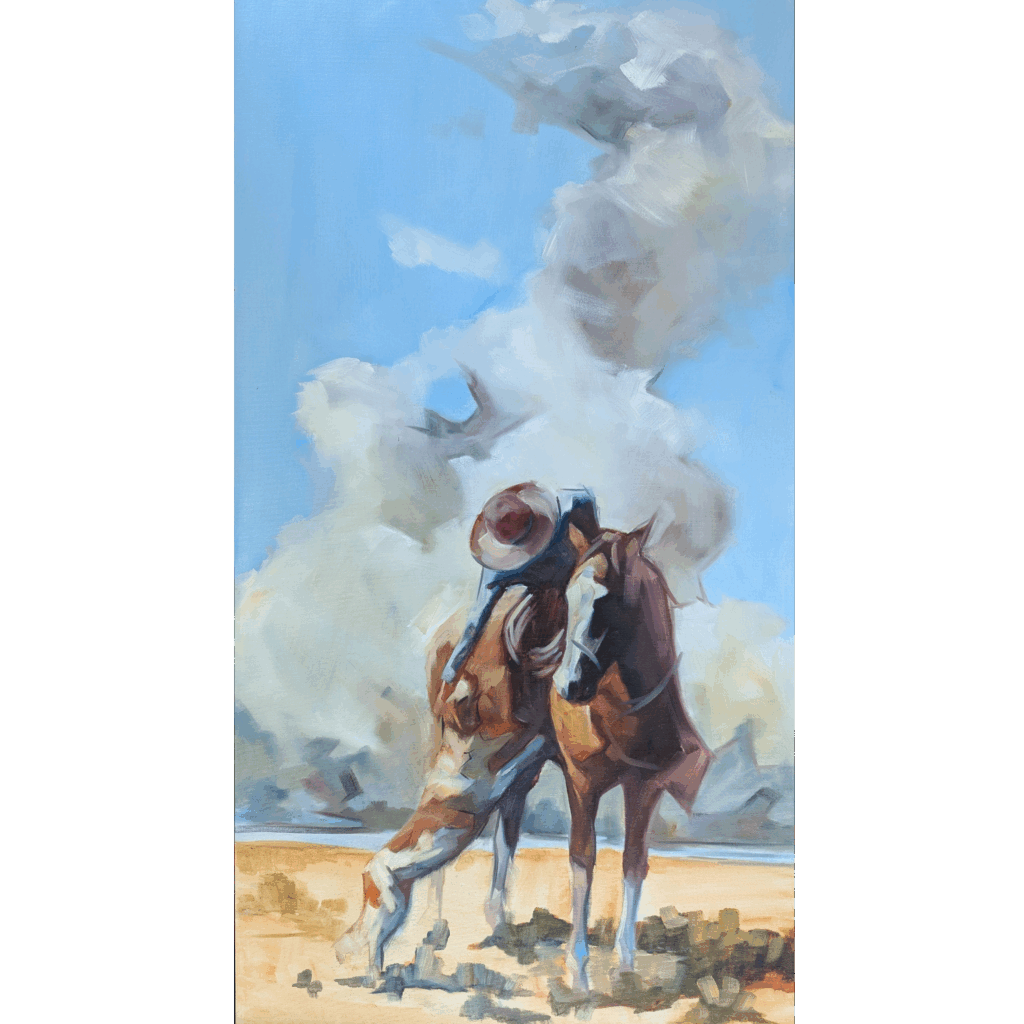
Q: What do you do or where do you go to find inspiration for your pieces?
A: I had one gentleman say to me at an art show that he had heard about my work and that he laughed at the stories because he didn’t know any women who worked alongside the men in the field. Since then, it has been my mission to share that women are an integral part of the Western business and lifestyle. It’s been to encourage women to own the title of cowgirl with pride. It’s been to encourage women to do amazing things.
This past year, I put out a call on my Instagram and asked friends I knew if they’d share their cowgirl story with me and a few photos. The project exploded! I received stories from far and wide across the world, and each one was so unique. I was reminded that there are so many different ways a person can be a cowgirl and what it means to each person. I continue to collect stories and photos, and each time I receive something, I am so amazed at women and what they do for the love of this life. And each time I am reminded that women matter and women’s stories matter, and what a blessing it is that I get to share it through art for others to connect with and interpret in their own ways.
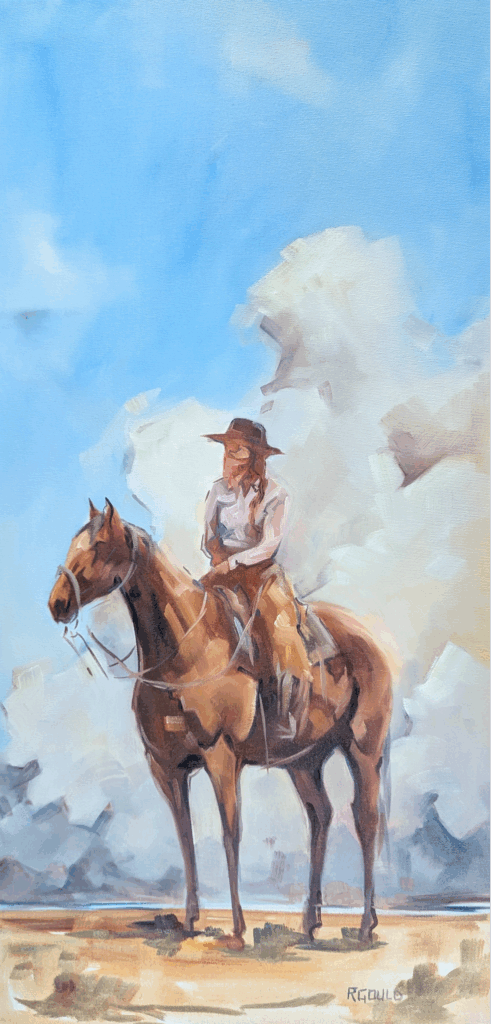
Q: Then expanding on that, what does your creative process look like for your pieces?
A: It usually starts with a story and an image idea. Sometimes I take an image someone has sent me and use it as is. Other times, I Frankenstein it from images in my head or from other images. The clouds and landscape are spur-of-the-moment creations from my head and the flow of the paint. I don’t know how something will look when it ends; it seems to be a feeling of where to place the paint and when it’s done. Sometimes my lack of planning gets me into trouble, but I’m not attached to the work, and I’m happy to paint over something if it doesn’t work out.

Q: How do you want to inspire people with your art?
A: I want people to feel empowered, to take pride in who they are and where they come from. I want them to feel connected to the land, to each other, and to the stories that shape us. I want people to feel seen, especially women whose lives and work often go unnoticed but are full of beauty and meaning. I want people to feel encouraged to keep creating, loving, and living wholeheartedly, even when life feels hard or uncertain.
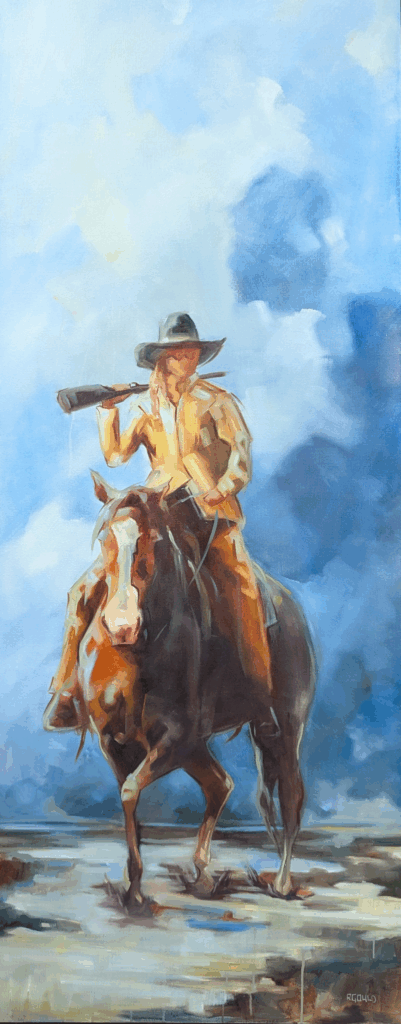
Renee’s Closing Thoughts
It’s pretty crazy how one random idea to paint while on maternity leave turned into this. What a blessing this career has been to work around farm life and raise two kids. A business that goes with the flow and is so challenging, while bringing me so much joy and fulfillment.
You can connect and see more of Renee’s work on Instagram @renee.egould.art or on her website at ReneeGould.ca.

